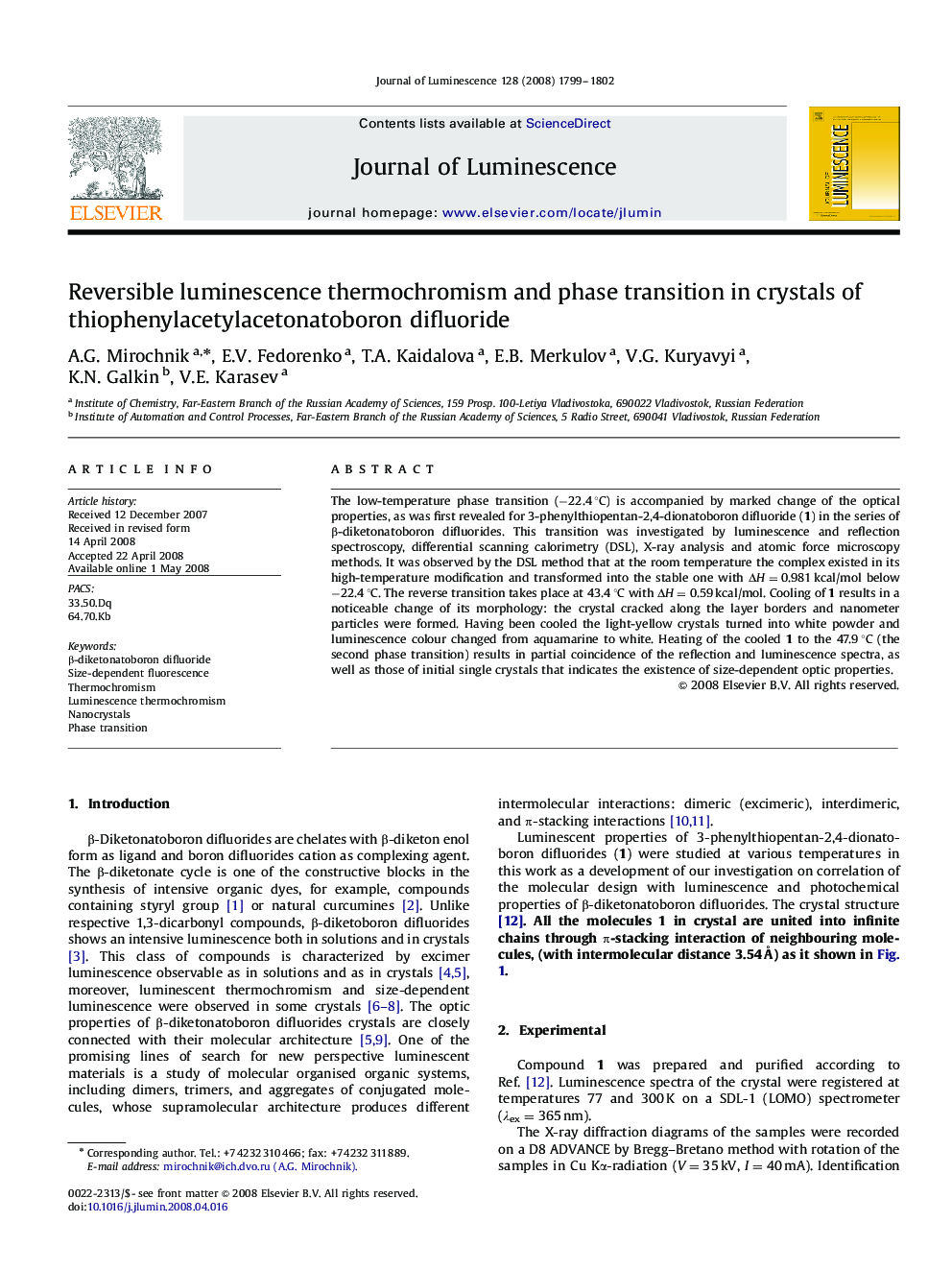| Article ID | Journal | Published Year | Pages | File Type |
|---|---|---|---|---|
| 5403226 | Journal of Luminescence | 2008 | 4 Pages |
Abstract
The low-temperature phase transition (â22.4 °C) is accompanied by marked change of the optical properties, as was first revealed for 3-phenylthiopentan-2,4-dionatoboron difluoride (1) in the series of β-diketonatoboron difluorides. This transition was investigated by luminescence and reflection spectroscopy, differential scanning calorimetry (DSL), X-ray analysis and atomic force microscopy methods. It was observed by the DSL method that at the room temperature the complex existed in its high-temperature modification and transformed into the stable one with ÎH=0.981 kcal/mol below â22.4 °C. The reverse transition takes place at 43.4 °C with ÎH=0.59 kcal/mol. Cooling of 1 results in a noticeable change of its morphology: the crystal cracked along the layer borders and nanometer particles were formed. Having been cooled the light-yellow crystals turned into white powder and luminescence colour changed from aquamarine to white. Heating of the cooled 1 to the 47.9 °C (the second phase transition) results in partial coincidence of the reflection and luminescence spectra, as well as those of initial single crystals that indicates the existence of size-dependent optic properties.
Related Topics
Physical Sciences and Engineering
Chemistry
Physical and Theoretical Chemistry
Authors
A.G. Mirochnik, E.V. Fedorenko, T.A. Kaidalova, E.B. Merkulov, V.G. Kuryavyi, K.N. Galkin, V.E. Karasev,
